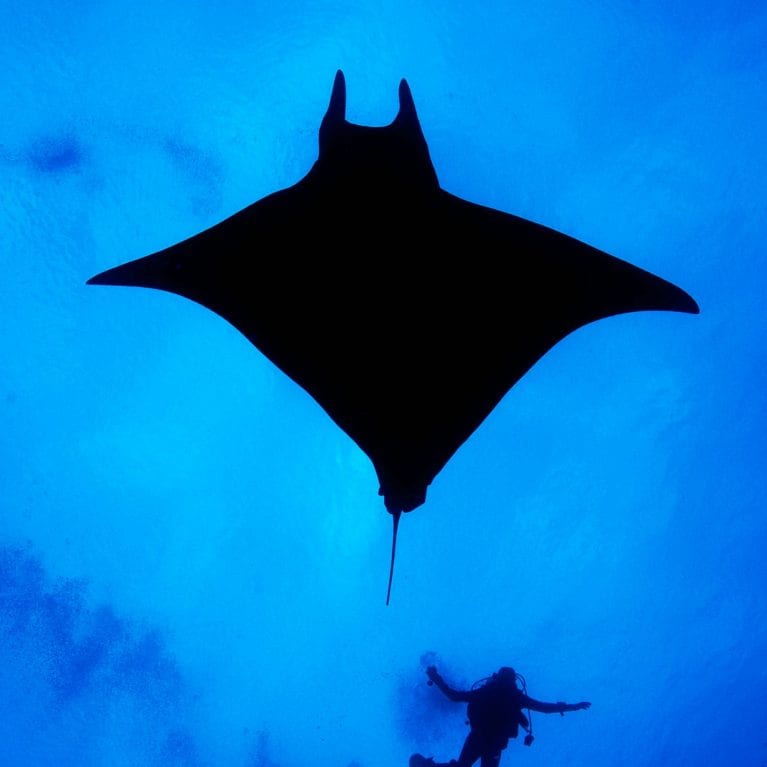Global manta & devil ray conservation
Globally, manta and mobula rays are under serious threat as they are targeted for their gills plates, which are sold as a treatment in traditional Chinese medicine. Nick is developing a worldwide network and strategy to ensure these rays remain a part of our oceans.

A Global Manta and Devil Ray Conservation Strategy
To improve the conservation status of manta and devil rays through the development of a Global Conservation Strategy.
Manta and devil rays are threatened by the international trade in their valuable gill plates. This combined with their slow life history, high catchability and global distribution means that we need a global focus to ensure effective conservation.
Manta and devil rays (family: Mobulidae) are highly mobile, broadly distributed and they routinely cross international boundaries. They are globally threatened by fisheries for the trade of their gill plates, which are highly valued in Asian markets. There is little protection to date; consequently calls for improved protection are increasing. However, the implementation of effective protections depends entirely upon the availability and communication of relevant scientific knowledge to those people best placed to take action. The IUCN Shark Specialist Group (SSG) is well-placed to coordinate and develop such a global strategy for the conservation of mobulids. Our role is to provide a suitable environment and framework within a broad group of people and organisations that can work towards developing a global mobulid conservation strategy within the wider experience of IUCN conservation planning.
We anticipate the following achievements during our first year:
- Develop a Global Manta and Devil Ray Network consisting of Guy Stevens, project leaders of SOSF-funded projects and other relevant scientists;
- Maintain and expand this network through communication activities, such as quarterly newsletters, expertise and knowledge surveys, hosted on IUCN SSG webspace; and
- Consult with the network (Guy Stevens, SOSF-funded projects and other relevant scientists) to identify goals and outputs of the Global Manta and Devil Ray Conservation Strategy workshop.

